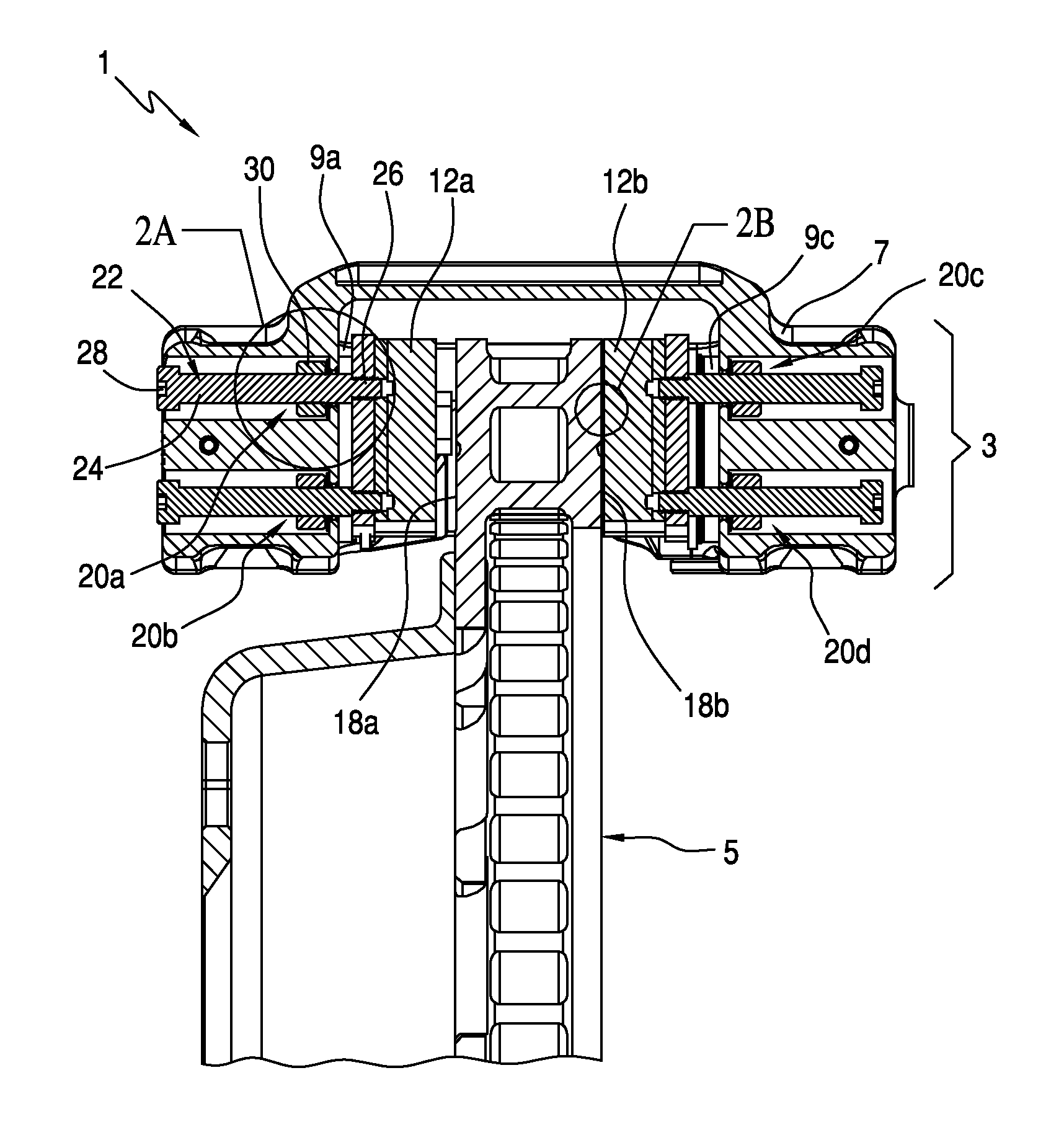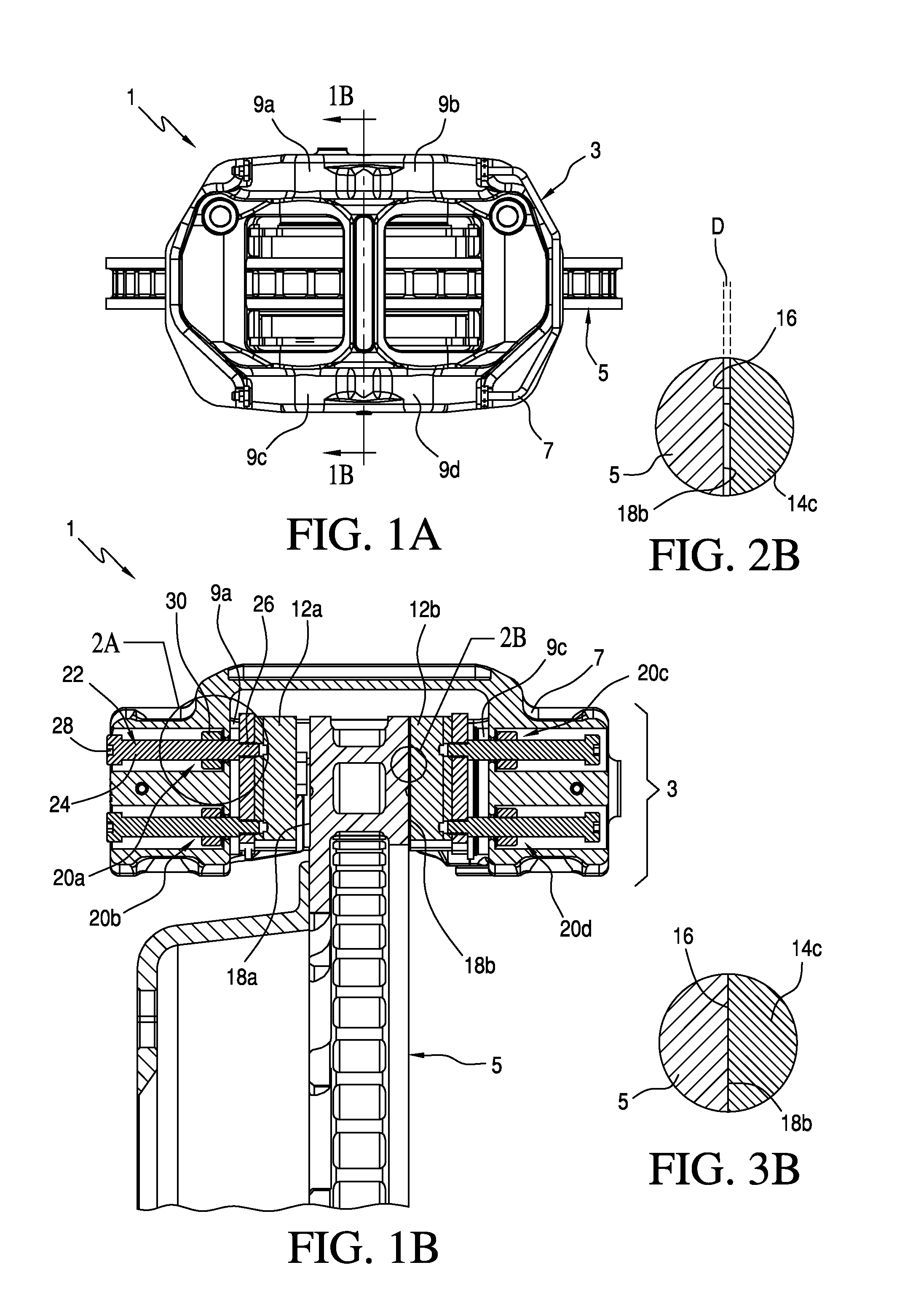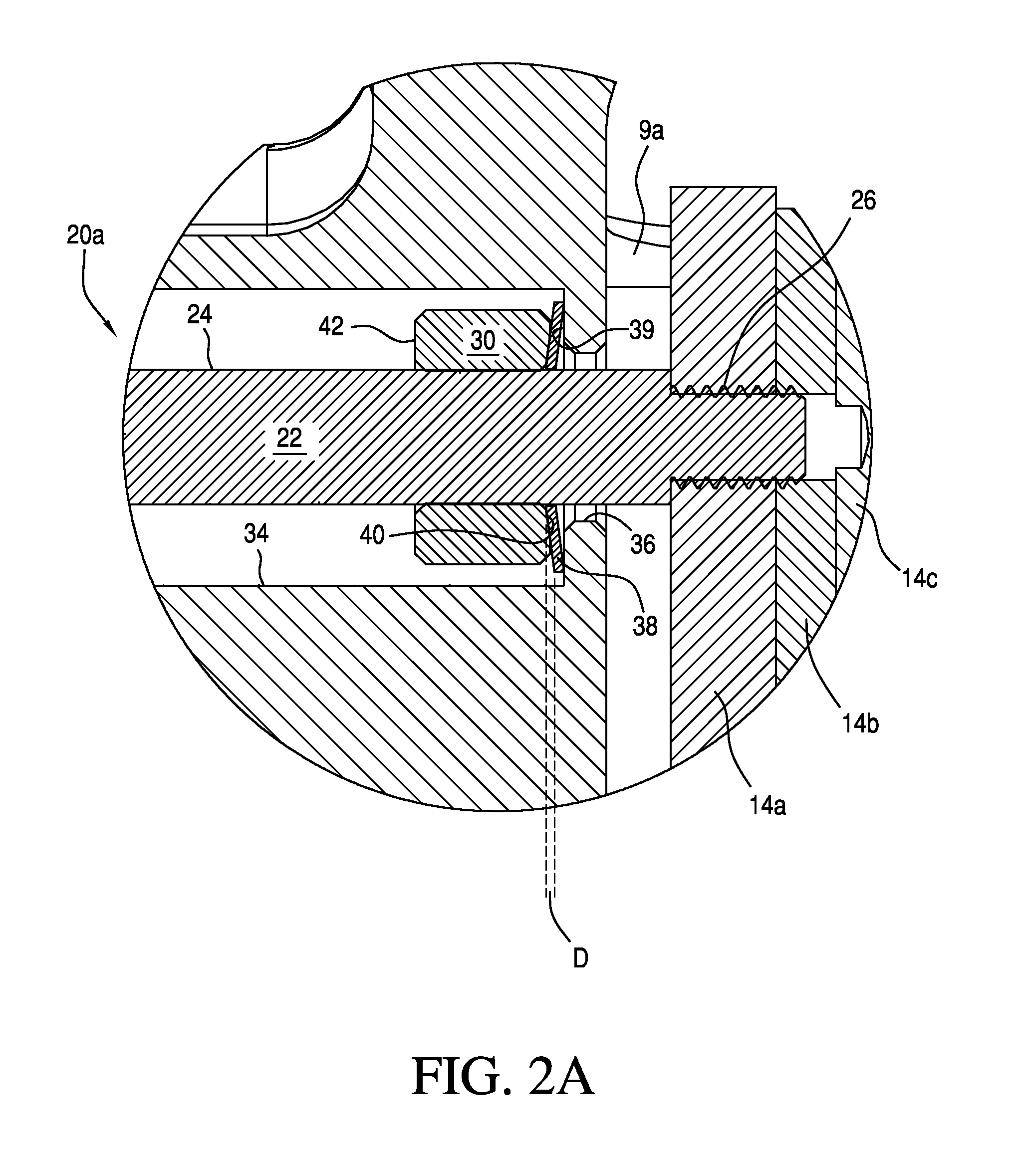Brake caliper with brake pad timing and retraction controller
- Summary
- Abstract
- Description
- Claims
- Application Information
AI Technical Summary
Benefits of technology
Problems solved by technology
Method used
Image
Examples
Embodiment Construction
[0023]FIGS. 1A and 1B illustrate a brake assembly 1 including the brake caliper 3 of the invention in combination with a rotor 5 attached to a wheel hub (not shown) which may be the wheel hub of an automotive vehicle. In this example of the invention, brake caliper 3 includes a housing 7 in which two pairs of opposing hydraulic caliper pistons 9a, 9b and 9c, 9d are slidably mounted within cylinders (not shown). Opposing brake pads 12a, 12b each include a backing plate 14a, and an underlayer 14b that secures a layer of pad material 14c to the backing plate 14a. Opposing brake pads 12a, 12b are mounted on the ends of the opposing caliper pistons 9a, 9b via the backing plate 14a. The brake pads 12a, 12b each have an engagement surface 16 which is adjacent to and engageable with one of the flat, opposing annular engagement surfaces 18a, 18b of the rotor 5 as is best shown in FIG. 1B. It should be noted that hydraulic pistons 9a, 9b and 9c, 9d are only one example of reacting members whi...
PUM
 Login to View More
Login to View More Abstract
Description
Claims
Application Information
 Login to View More
Login to View More - R&D
- Intellectual Property
- Life Sciences
- Materials
- Tech Scout
- Unparalleled Data Quality
- Higher Quality Content
- 60% Fewer Hallucinations
Browse by: Latest US Patents, China's latest patents, Technical Efficacy Thesaurus, Application Domain, Technology Topic, Popular Technical Reports.
© 2025 PatSnap. All rights reserved.Legal|Privacy policy|Modern Slavery Act Transparency Statement|Sitemap|About US| Contact US: help@patsnap.com



